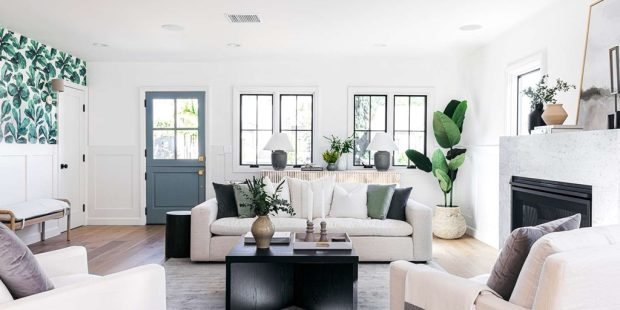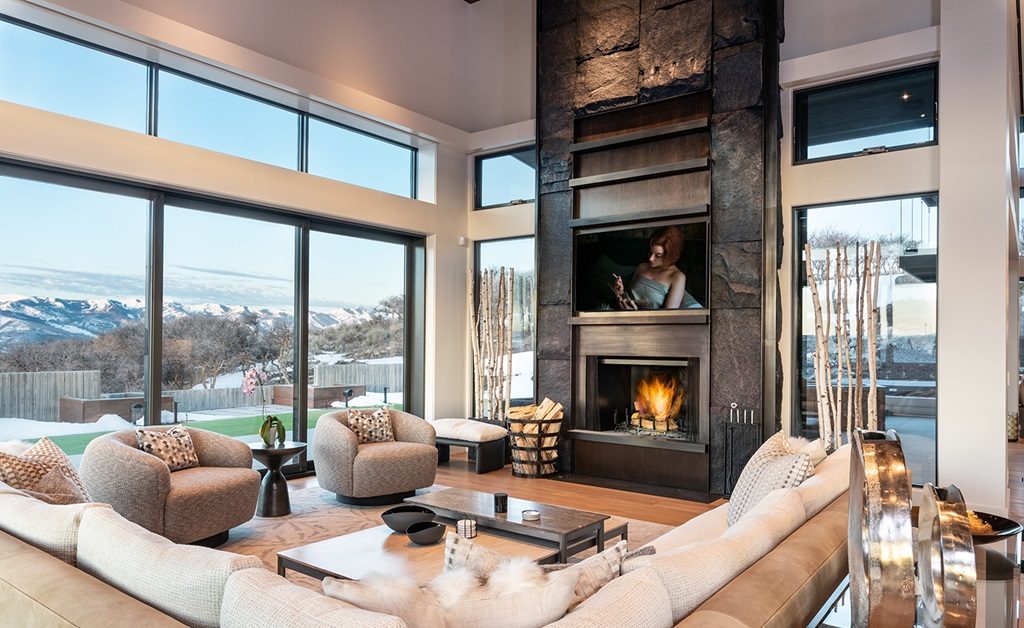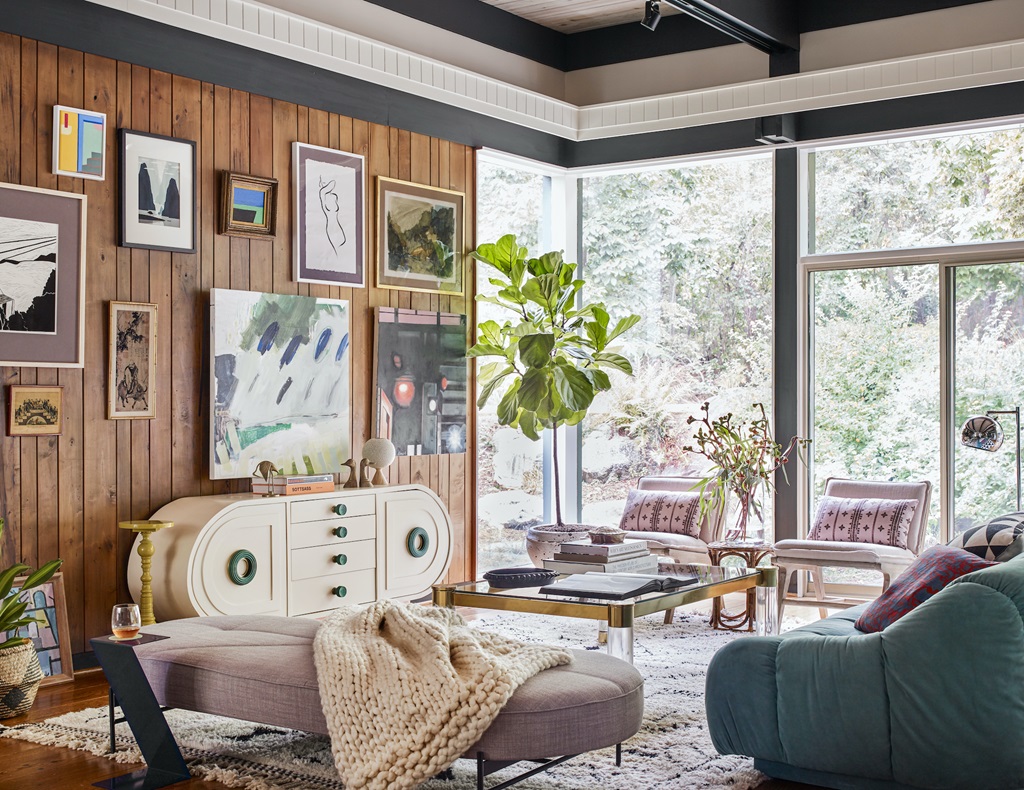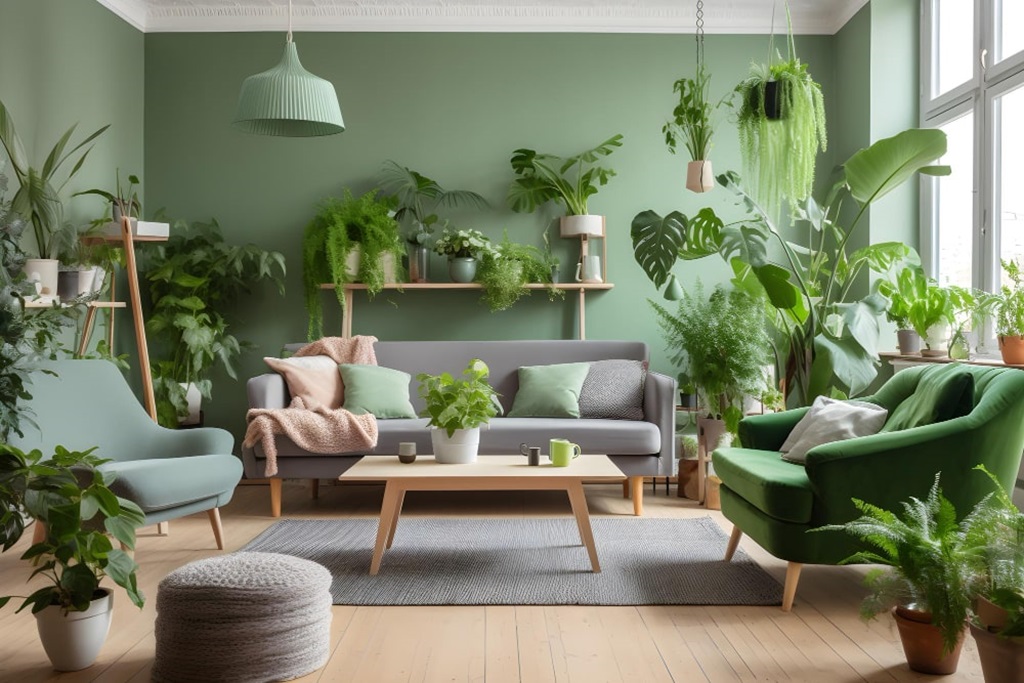
Your home’s second living room provides extra space to relax, entertain, and pursue hobbies. However, making this bonus room feel cohesive with the rest of your home’s style can be challenging. The key is finding the right balance between functional spaces and decorative accents that reflect your tastes. With some strategic planning and these 29 2nd living room ideas, you can create a secondary family room that stands out and fits in.
Define the Purpose
Before choosing any design elements, consider how you want to use your extra living space.
Here are some popular 2nd living room functions to consider:
Entertainment Space
Turn the room into a private theater, game room, or lounge area. Include comfortable seating oriented toward a TV or projector screen. Sound insulation, dimmable lights, and tech-friendly fixtures will optimize the audiovisual experience.
Home Office
Maximize productivity by incorporating office must-haves like a large desk, organizational storage, a printer station, and great lighting. Stylish office chairs and decor will keep things looking sharp.
Craft Room
Make the most of your hobbies by providing dedicated workstations for sewing, scrapbooking, jewelry-making, woodworking, painting, and more: tailor storage, countertops, sinks, lighting, and tools to suit your creative passions.
Kid Zone
Give kids a space with play areas, toy storage, art supplies, comfy seats, and durable, easy-to-clean furnishings. Vibrant colors and whimsical decorative touches add to the fun.
Once you’ve zeroed in on the room’s primary functions, remember them as you assemble the rest of your design scheme. All elements should work in service of the intended purpose.
Direct the Flow
A second living room’s layout directly impacts functionality. Arrange furnishings to allow open pathways between critical areas based on sightlines and foot traffic patterns.
Here are some layout tips:
- Place seating near focal points like fireplaces, windows, or entertainment systems. Leave plenty of space to walk comfortably around and between groupings.
- Float furniture away from walls rather than pushing everything flush against them. This creates a more inviting flow.
- Use area rugs to define functional zones within an open floor plan. They’ll also make large rooms feel more intimate.
- Incorporate modular sectionals and ottomans that can be repositioned easily. This allows you to reformat the layout when needed.
Take time to map out furniture placement and pathways on paper first. A template scaled to the room’s dimensions will help visualize spacing and proportions. Tweak the arrangement until you find a seamless flow that suits your purposes.
Strike a Color Palette
A cohesive color story is critical to tying a second living space into your home aesthetic.
Here are some ideas for selecting a harmonious palette:
Complement Existing Hues
Look at critical colors used elsewhere in your decor and choose accent shades that work well with them. Monochromatic schemes using different tones and tints of one color are a foolproof option. You can also choose similar colors side by side on the color wheel.
Align with a Style
Let your preferred interior design style guide your color choices. For example, nautical schemes rely on blues and tans. Mid Century spaces feature earth tones and muted hues. And boho living rooms pop with vibrant jewel tones against neutral backdrops.
Reflect Personality
Maybe bright, saturated colors energize you, or you’re drawn to soft, soothing pastels instead. Don’t be afraid to choose a palette that makes you happy when you walk through the door. A second living room offers lots of flexibility.
Consider Lighting
The room’s natural and artificial lighting impacts how colors appear. Stick with lighter, warmer paint shades for north-facing rooms with fantastic, subdued light. South-facing spaces can handle deeper, bolder hues.
No matter which direction you take, limiting your selection to 3-5 core colors creates cohesion. You can always add punches of additional accent colors with accessories, artwork, and decor.
Select Impactful Materials
Tactile furnishings and finishes elevate a living room’s style significantly. From luxurious carpets and throw pillows you can sink into to richly-grained wood finishes, your material choices should appeal to the senses.
Here are some ideas for materials to feature:
- Natural stones like travertine, marble, and granite add organic texture and timeless sophistication. Use in flooring, countertops, and accents.
- Reclaimed or distressed woods with rich patinas, nicks, knots, and grain patterns feel pleasantly imperfect and rustic.
- Leather brings supple warmth and refined elegance to upholstered furniture and ottomans. Top-grain leather improves with age.
- Plush carpeting provides literal softness and visual depth underfoot. Wool and wool-blend carpets offer durability and natural stain resistance.
- Natural fibers like cotton, silk, jute, and linen provide breathable texture for window treatments, pillows, and accent furniture.
- Metallics lend a glam touch when used strategically in finishes, fixtures, mirrors, and accessories. Gold, silver, brass, and copper are classic choices.
Seeking out quality materials designed to improve with age will help your second living room retain its luxe feel over time. Combining complementary textures also adds compelling visual interest.
Incorporate Layers of Lighting
The proper lighting ensures your second living room feels welcoming at all hours.
Include layers of adjustable illumination:
- Ambient lighting washes the space in a generally even glow. Recessed ceiling lights, track lighting, and table/floor lamps handle this foundational task.
- Task lighting focuses bright illumination right where you need it most. Think desk lamps, under-cabinet lights, and adjustable reading lights.
- Accent lighting casts dramatic pools of light on artwork, architectural details, collections, and decorative displays. Picture lights, spotlights, and directional flood lights handle accenting duties.
Ensure lighting can be adjusted via dimmers, multiple switching zones, and separate controls for different fixtures. This allows you to set the perfect mood for any activity, from after-dinner entertaining to late-night reading.
Define Functional Zones
While you want furnishings and accents to feel cohesive, it helps to define distinct zones within a large living room tailored to specific needs.
- Floating room dividers, area rugs in different styles, changes in flooring materials, and overhead lighting separators can subtly distinguish zones.
- Arrange furniture groupings around focal points. For example, orient a conversation area around the fireplace and a reading nook around a bay window.
- Instead of spreading out chaotically, group media components like TVs, gaming systems, and speakers so wires stay organized.
Pay extra attention to making work zones and kids’ areas feel self-contained. This prevents toys and tasks from encroaching on living/lounge areas.
Embrace Eclectic Decor
Second living rooms offer the chance to showcase favorite collectibles and treasured mementos you may not have space for elsewhere. Embrace the freedom to decorate more boldly and eclectically.
- Display memorable travel souvenirs, family photos, heirlooms, and other memorabilia throughout the space. Groupings by theme have an extra impact.
- Rotate in art and accessories to suit your mood or season. A secondary living room can handle more frequent styling updates.
- Let your passions shine through via niche decor elements related to sports teams, favorite films, alma maters, cherished books, or dream destinations.
- Break out statement pieces like an oversized clock, bold graphic artwork, or an eye-catching accent chair that might overwhelm other areas.
- Show off collections that tell stories about your interests, from record albums and concert posters to rare books and vintage cameras. Dedicated display cabinets make this a breeze.
While personal flourishes are great, edit collections and accessorize with restraint to keep things from feeling too busy. Pare down to your most beloved items.
Select Durable, Easy-Care Furnishings
Your second living room likely sees lots of casual use, so go for hardy, family-friendly furnishings that can withstand wear and tear.
- Performance fabrics like microfiber, nubby polyester blends, and stain-resistant synthetics hold up to spills, pet hair, and daily use without showing much wear.
- Indoor/outdoor rug materials like polypropylene and recycled vinyl are impervious to moisture and super-durable underfoot. Just hose them off to restore them to new condition.
- All-weather wicker and rattan work indoors and outdoors, provide pleasant texture and quickly hide scuffs. Just vacuum and wipe clean.
- Slipcovered seating lets you swap out covers periodically for an instant refresh. Sturdy canvas, cotton, and poly-cotton blend launder up nicely.
- Multifunctional furniture like storage ottomans, folding console tables, and nesting coffee tables handle wear while offering convenient solutions.
Prioritize family-friendly practicality in your furnishings. Then, inject personal style through accents and decor.
Smart Storage Solutions
An activity-centered family room relies on intelligent storage to keep things orderly but accessible.
These solutions get high marks for utility and visual appeal:
- Baskets corral everything from remotes and desk supplies to kids’ toys. Woven styles made from seagrass, rattan, and bamboo add natural texture.
- Cabinets and shelving provide copious storage for media components, gaming and craft supplies, and reading material. Include doors to conceal clutter when needed.
- Under-seat storage takes advantage of extra space beneath couches and chairs. Perfect for stowing spare blankets and games.
- Multi-use ottomans and coffee tables provide generous concealed storage inside. Some even offer flip-up tops or removable trays.
- Coat hooks and racks hanging near the entry neatly collect bags, coats, and scarves. Opt for compact wall mounts or freestanding pillars.
Edit regularly to keep volumes manageable. And incorporate bright touches like hooks, trays, and baskets to corral small objects right where you need them.
Include Multi-Purpose Pieces
Given its flexible role, a second living room benefits from multitasking furnishings.
Here are some all-stars:
- Sofa tables offer a surface for drinks and storage in a slim profile that tucks behind seating.
- Benches slide up to coffee tables when needed and nestle at the ends of beds or by windows when not.
- Poufs are spare seats, footrests, and side tables in one portable piece.
- Daybeds instantly become guest beds by night with the addition of sheets and pillows.
- Retractable dining tables expand to seat extra guests but tuck discreetly out of the way when not hosting.
- Desk armoires can be closed to hide office clutter and blend in as a sideboard or cabinet.
Multifunctional furnishings help maximize both seating and storage capacity in the available footprint. And they let you adapt the layout to changing needs effortlessly.
Incorporate Greenery
Plants do more than look pretty — they improve air quality and give any room life.
Here’s how to add healthy and hassle-free greenery 2nd living room ideas:
- Place low-maintenance succulents and air plants on tabletops and wall-mounted terrariums for organic texture and color.
- Hang trailing vines like philodendrons or pothos in macrame or wire holders. They’ll flourish in bright, indirect light.
- Set larger statement plants like fiddle leaf figs and snake plants in eye-catching cachepots. Choose hardy varieties that tolerate some neglect.
- Add fresh-cut blooms and greenery in vases and bowls to inject vibrancy. Hydrangeas, proteas, and eucalyptus have good staying power.
- Use cacti and desert plants like aloe and jade to complement a Southwestern-inspired space. Please place them in natural clay or concrete planters.
- Display ferns and palm varieties atop bookshelves and media cabinets to add an elegant accent while helping filter the air.
Take cues from your home’s style when choosing planters and containers. And go for plants well-suited to your specific lighting conditions.
A second living space offers terrific potential to indulge design whims and create a personalized retreat. Keep the room’s intended uses front of mind as you put the pieces together. Maintaining consistency with your broader home decor while allowing eclectic flourishes will help the space feel special without seeming disjointed.
With clever, multifunctional furnishings, strategic organization solutions, and attention to durable materials and practical layout, your bonus living room can become a comfortable spot for connection, creativity, and rejuvenation your whole household enjoys.
Conclusion
Creating a stylish, functional 2nd living room idea requires balancing purpose, spatial planning, durable furnishings, and personal touches. Start by defining your space goals. Select an adaptable layout and flow that supports your intended uses. Choose cohesive colors, quality, and textural materials. Incorporate smart storage, greenery, and multifunctional pieces. Then, infuse characteristics that make the room distinctly yours. With strategic decisions guided by your lifestyle, this bonus space can become a welcoming room for gathering, relaxing, and recharging.
Frequently Asked Questions
What size should a 2nd living room be?
Ideally, a secondary living room should be at least 150-200 square feet to accommodate essential furnishings with room to circulate. For media rooms, allow extra space for optimal AV equipment setup and viewing distances.
How do I decorate a 2nd living room on a budget?
Focus the budget on durable foundational pieces like sofas, seating, and storage. Then, inexpensively, use economical accents like slipcovers, throw pillows, second-hand rugs, and DIY art to infuse color and personality.
How can I make a small 2nd living room feel more significant?
Use light colors on walls, ceilings, and furnishings to expand the space visually. Float minimalist furniture away from walls and utilize compact or nesting pieces. Finally, add mirrors and reflective metallic accents to make the room more spacious.
What 2nd living room ideas work for kids?
For kid-friendly spaces, look for durable, cleanable fabrics and materials. Incorporate storage benches, bookcases, and bins to corral toys. Add a vibrant pop of color on one accent wall and bring in child-size seating.
What should I put in an empty 2nd living room?
How you furnish the space depends on your goals, but versatile options like sectional seating, media storage, a convertible desk, and multifunctional coffee and side tables help maximize utility. Then, layer in accents like plants, throws, pillows, and art.



